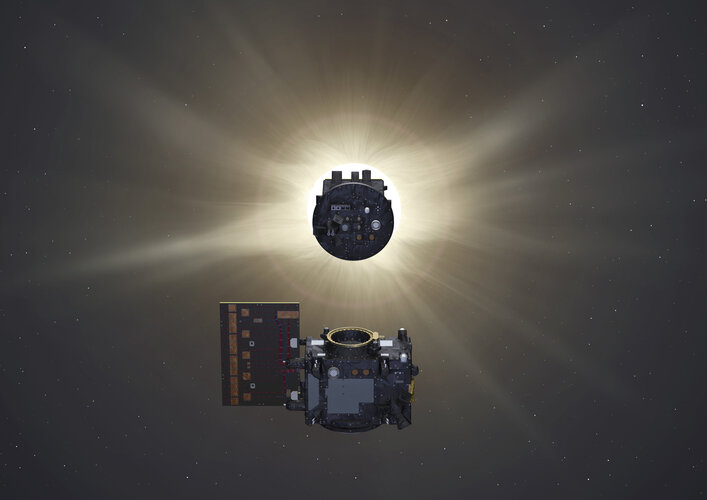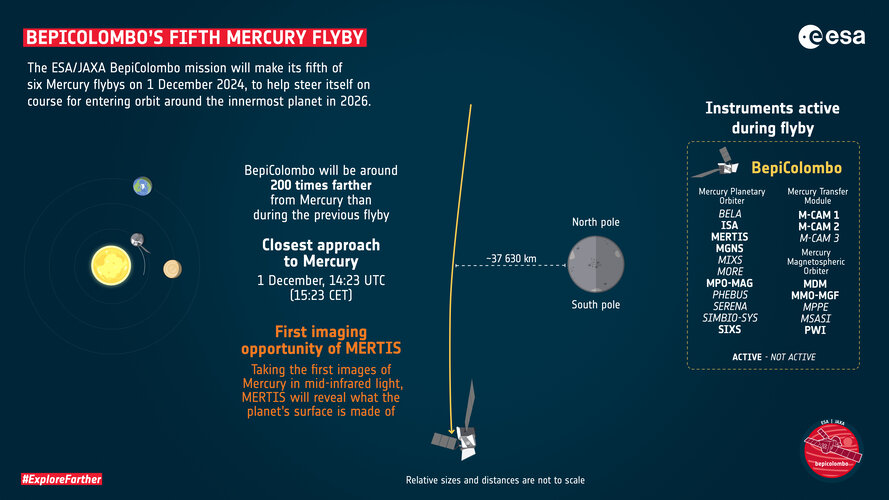Ignis mission name and patch explained
Monday, 02 December 2024 10:00 Video:
00:02:39
Video:
00:02:39
The Ignis mission, named after the Latin word for ‘fire,’ symbolises the spark igniting a new era in Poland’s space endeavours.
The central motif of the patch features an eagle – a reference to the emblem of Poland – in white and red, reflecting the colours and design of the Polish national flag. Its tail gracefully evokes a flame, while its outstretched wings trace the contours of the Orla Perć mountain range in the Polish Tatra Mountains. Within the mission’s name, the second ‘i’ takes the form of the International Space Station. Above it, stars converge to form the Scutum constellation, paying homage
Research study sets path for a global 5G space network
Monday, 02 December 2024 08:40
Researchers have achieved a breakthrough by mapping out the future of space-enabled 5G telecommunications. The 5G Infrastructure Study (5G-IS), funded by ESA's Connectivity and Secure Communications directorate, provides a comprehensive blueprint for delivering reliable connectivity worldwide.
Proba-3: Flying two spacecraft is harder than one
Monday, 02 December 2024 06:48
What’s harder than flying a single satellite in Earth orbit? Flying two – right beside each other, at proximities that would normally trigger collision avoidance manoeuvres.
5 Trends in the Geospatial Market For 2025 - 2030
Monday, 02 December 2024 06:27 The geospatial sector is expected to grow significantly between 2025 and 2030. Different patterns will be used to specify this transition. In particular, artificial intelligence will play an increasingly important role in geospatial technology. Demand for services that use location data is also rapidly expanding. Geospatial data-collecting technologies are becoming increasingly complex. Customiz
The geospatial sector is expected to grow significantly between 2025 and 2030. Different patterns will be used to specify this transition. In particular, artificial intelligence will play an increasingly important role in geospatial technology. Demand for services that use location data is also rapidly expanding. Geospatial data-collecting technologies are becoming increasingly complex. Customiz Mars Ocean Analogs Completes Winter Solstice Voyage and Plans Future Expeditions
Monday, 02 December 2024 06:27 The Mars Ocean Analogs (MOA) team has successfully concluded its Winter Solstice Voyage, an ambitious North Atlantic expedition that ran from November 15 to November 24. This marked MOA's fifth major sea-based analog mission, building on the momentum of previous high-profile voyages, including a notable journey to the SpaceX launch site near the U.S.-Mexico border.
Departing from Morris Ca
The Mars Ocean Analogs (MOA) team has successfully concluded its Winter Solstice Voyage, an ambitious North Atlantic expedition that ran from November 15 to November 24. This marked MOA's fifth major sea-based analog mission, building on the momentum of previous high-profile voyages, including a notable journey to the SpaceX launch site near the U.S.-Mexico border.
Departing from Morris Ca SpaceX launches fifth mission for NRO’s proliferated architecture
Saturday, 30 November 2024 20:02

China launches first Long March 12 from new commercial spaceport in boost for country’s lunar plans
Saturday, 30 November 2024 14:48
Lockheed Martin unveils solar power array for Artemis program
Saturday, 30 November 2024 14:24

'Marching orders haven't changed': New Artemis mobile launcher takes shape amid uncertain future
Saturday, 30 November 2024 03:40This request seems a bit unusual, so we need to confirm that you're human. Please press and hold the button until it turns completely green. Thank you for your cooperation!
Press and hold the button
If you believe this is an error, please contact our support team.
185.132.36.159 : a2d9fbe9-6f93-4f75-ada1-dcb54b20
Space Force awards Raytheon $196.7 million for additional work on GPS ground control system
Friday, 29 November 2024 13:58

BepiColombo's fifth Mercury flyby
Friday, 29 November 2024 13:30 Image:
BepiColombo's fifth Mercury flyby
Image:
BepiColombo's fifth Mercury flyby Watch live: Vega-C to launch Sentinel-1C
Friday, 29 November 2024 13:15
The Copernicus Sentinel-1C satellite is ready for liftoff! Tune in to ESA WebTV on 4 December from 22:00 CET to watch the satellite soar into space on a Vega-C rocket to be launched from Europe’s Spaceport in Kourou, French Guiana. Sentinel-1C is scheduled to liftoff at 22:20 CET.

 Image:
Proba-3 encapsulated
Image:
Proba-3 encapsulated 


